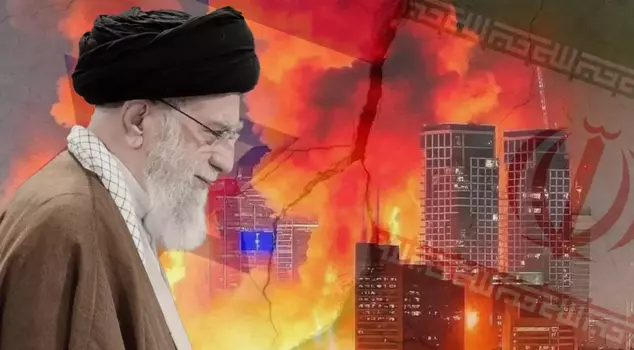
26.06.2025 13:00
Iran's religious leader Ayatollah Ali Khamenei has not appeared in public for about a week. It is suggested that he is in a shelter due to the possibility of an assassination attempt. While officials have not made a clear statement, this silence has increased concern and political activity in the country. According to experts, if Khamenei remains unseen until the Ashura ceremony at the beginning of July, it could be a sign of serious problems.
The war, ignited by Israel's military and nuclear strikes against Iran, has paused on its 14th day with a temporary ceasefire. However, the whole world is now focused on another question: Where is Iran's religious leader Ayatollah Ali Khamenei?
OFFICIALS SILENT, PUBLIC ANXIOUS
There is no clear information about Khamenei's situation, who has not been seen in public for about a week and has made no statements. His silence, as a key figure in Iran's decision-making mechanisms, has created serious curiosity and concern among both the public and political circles... An Iranian state television presenter was one of the first official voices to question this silence. During the broadcast, he directed the question to an official from Khamenei's office: "People are very worried about the supreme leader. Can you tell us how he is?" However, the head of the archive office, Mehdi Fazaeli, instead of giving a clear answer, said, "We all must pray. The people responsible for protecting the supreme leader are doing their job well."
ASSASSINATION FEAR, EXTRA SECURITY MEASURES
According to Iranian security circles, Khamenei is hiding in a bunker due to the risk of assassination. It is reported that all forms of contact, including electronic communication, are avoided to protect him from potential attacks. There are also claims that Khamenei has appointed three clerics as potential successors during this process. Hamzeh Safavi, the son of the commander of the Iranian Revolutionary Guards and a political analyst, stated that it is believed that Israel could attempt an assassination even during the ceasefire, and therefore extraordinary security protocols are in place.
SHADOW LEADERSHIP AND POWER STRUGGLE
After Khamenei's disappearance, the balance of power in the political arena began to change. Four senior Iranian officials speaking to the New York Times indicated that alliances are forming within the government and a power struggle has begun. Particularly, the moderate wing led by President Masoud Pezeshkian is signaling a return to diplomacy with the U.S. It is stated that alongside Pezeshkian, Judiciary Chief Gholam-Hossein Mohseni-Ejei, known for his closeness to the religious leader, and Chief of Armed Forces General Abdolrahim Mousavi are also involved.
"IF HE DOESN'T APPEAR BY ASHURA, IT'S A BAD SIGN"
Sanam Vakil, the Middle East Director of the British think tank Chatham House, stated that Khamenei's absence could be a serious sign. Vakil emphasized that if he does not appear in public before the Ashura ceremony, it would raise concerns about his health or leadership. The Ashura ceremonies will be held in early July as part of the month of Muharram. It is being discussed that if Khamenei does not appear in public by that date, the political balances in Iran could become even more complicated.